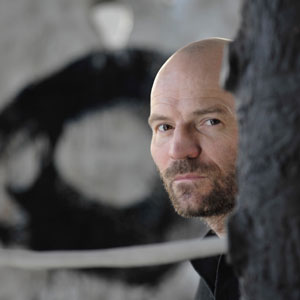Artist Statement
I am in this privileged group of people who do what they always want to do in their lives. I discovered clay/ceramics very early in my childhood, and from that moment until today it is much more than my main method of expression in art. It is my life, passion and statement - the path, and the tool, to discover the world around me and myself. Once I thought that it was I that shaped the clay and controlled the fire, now I know that the clay is shaping me and the fire controls my life. Thanks to clay/ceramics, I have traveled and met amazing people, learned from them and also shared my experience. Ceramics, in all its manifestations, is an extraordinary testament to the progress of human civilization. It combines creativity, technology, design and science into one art form. I don't think you will ever be bored if you are aware of the range of possibilities it could offer. As an artist and educator I am sure the ceramic process will be an important model of sustainability in the future.
In past years I have written many statements about my approach to ceramics, clay and fire and why I do art. If I had to define what has not changed, I would call my research for a kind of ”Code of Nature”. This “Code” is hidden in textures, space, mass, shape, color, volume, density and processes that are continuously taking place in nature. I think when an artist, by his practice with matter is able to discover this code and interpret it in his own creative way, his art becomes universal and true. It’s the obvious result of close observation of the natural world and of organic textures and processes. For more than twenty years, this is what I have been looking for.
My ceramics have always connected to nature as the main source of inspiration and the idea of transposing natural process into three dimensional objects. Surfaces of my sculptures are split, cracked or wrenched open to reveal pitted, cell-like structures, trying to make the enigmatic, abstract forms springing from my hands in the way nature produces rock formation. Using intuition and response instead of design, the shape and form retain a sense of spontaneity. The sculpture remains undone until I feel comfortable and familiar with it. Using simple shapes and organic forms, I try to evoke real emotions and associations with our own bodies and processes, which concern everything which is material. The fact that objects destroyed, degraded, in ruins and mere seconds away from complete disintegration, have always been fascinating to me does not come from a pessimistic point of view. It is rather a belief that after destruction and disappearance, all things will begin anew, giving hope for a renewed process of life’s rebirth. It seems to me that I have stopped thinking in the categories of the creation of artifacts, rather, the side products of a certain process, resulting from reflections and attempts at materializing a transformation which I experience during work.
This method is continued during the wood-firing of my works up to the temperature of 1350°C. Fire and high temperature melts clay and the ash that covers it. It is a violent and sometimes uncontrollable process where I push the boundaries of firing and the limits of clays pyro-plasticity. That creates unique and unexpected colors and textures on the surface of the work. I never want to control either the making or firing of my ceramics – I’m basically interested in expression and not in perfection.
Since I have started making large works, I have experienced that volume, density and scale matters. Large-scale sculptures attempt to create a certain relation between an object and a man. My recent works are simple, compact, and massive. Weight and density has this same importance as color, texture, shape. Only when we faced objects that are physically bigger, harder on ourselves, which we are not able to lift or move, atavisms that accompany us from the beginnings of humankind are awakened. This feeling comes from an observer not from the observed object, large scale work is triggering what is deep within us.
Sometimes I use my large-scale ceramic sculptures as canvases, which allow me to cover them with expressive surfaces. The marks created on my ceramic surfaces are impulsive and full of energy while also referring to the origin of painting. The process of brushing, dripping, spraying, and throwing the clay slip is immensely expressive and grounded in the gestural, processual of painting. The marks created during the painting process are intuitive and quickly made as opposed to the time-consuming process of building the ceramic sculptures.
It is often said that someone or something has strong roots. If you work with clay, your hands are your roots. It is through your hands that you draw energy out of clay, they supply and feed your work. If I can’t work for a longer period, I feel that I’m weakening, rootless, losing contact with my identity. Only through everyday practice, these roots can bring strength to the development of your creativity. I do believe I am still developing and trying to push the boundaries of ceramics as an expressive material, constantly asking questions and searching for personal answers.
-- Michał Puszczyński
Bio
Michał Puszczyński was born in Poland in 1976.
Puszczyński creates out sculptures and installations using ceramics as the main medium and has been a major proponent of Eastern methods of ceramic firing in Poland. He has taken part in over 200 exhibitions, symposia and artistic projects in Europe, the USA, and Asia. He received his doctoral degree in 2013, and works as a Adjunct Professor at the Department of Ceramics at the Faculty of Ceramics and Glass at the Academy of Fine Arts in Wrocław.











